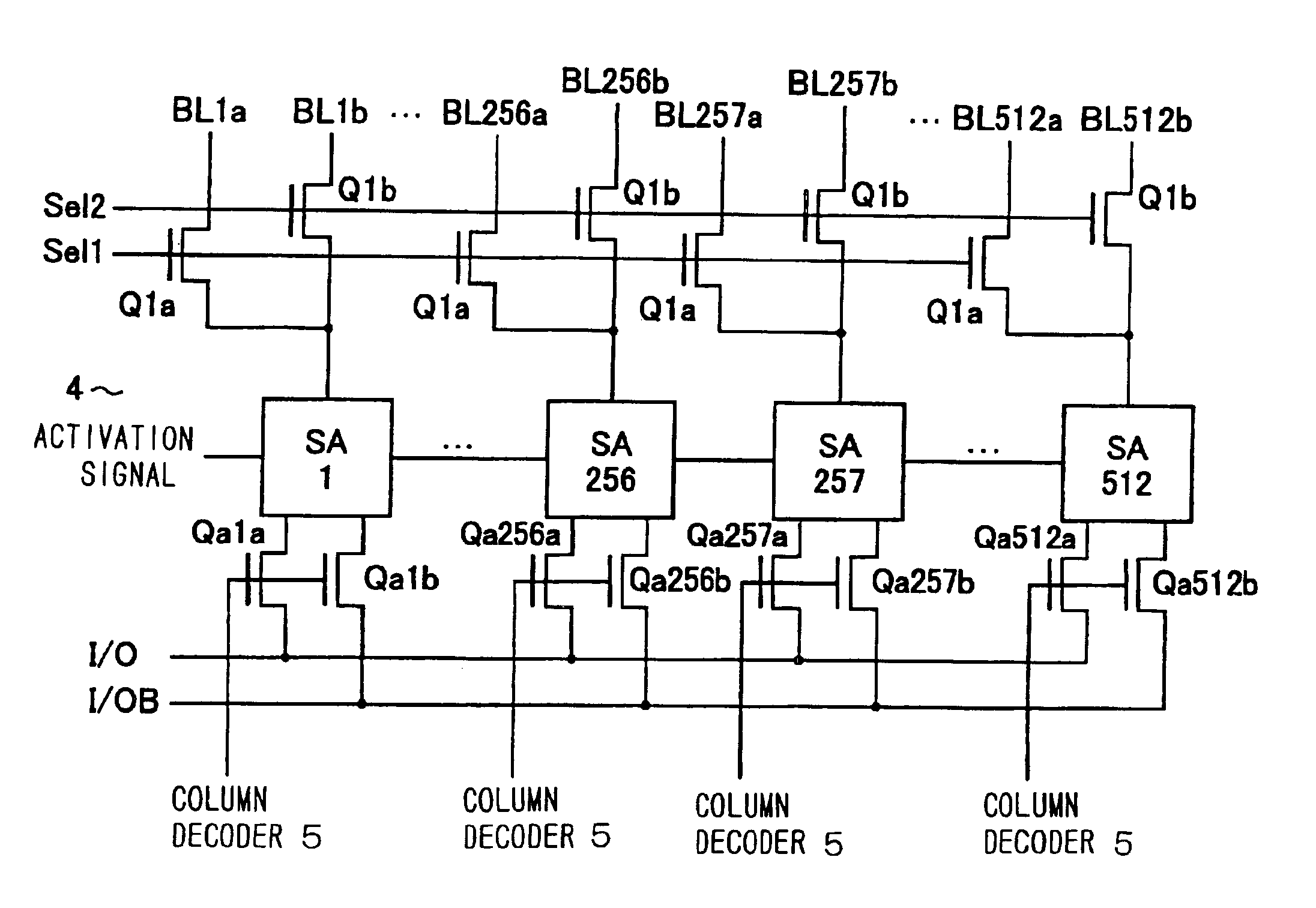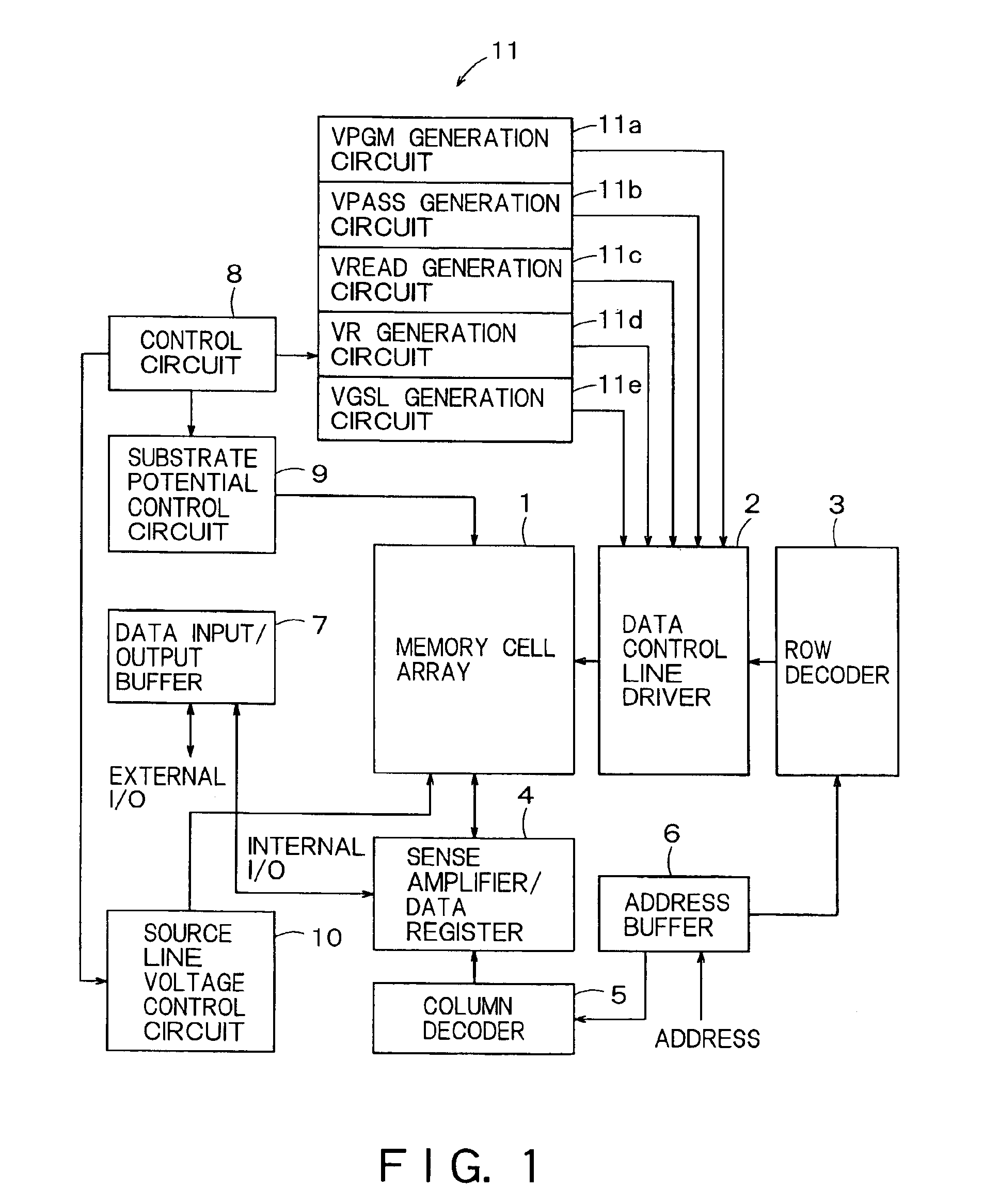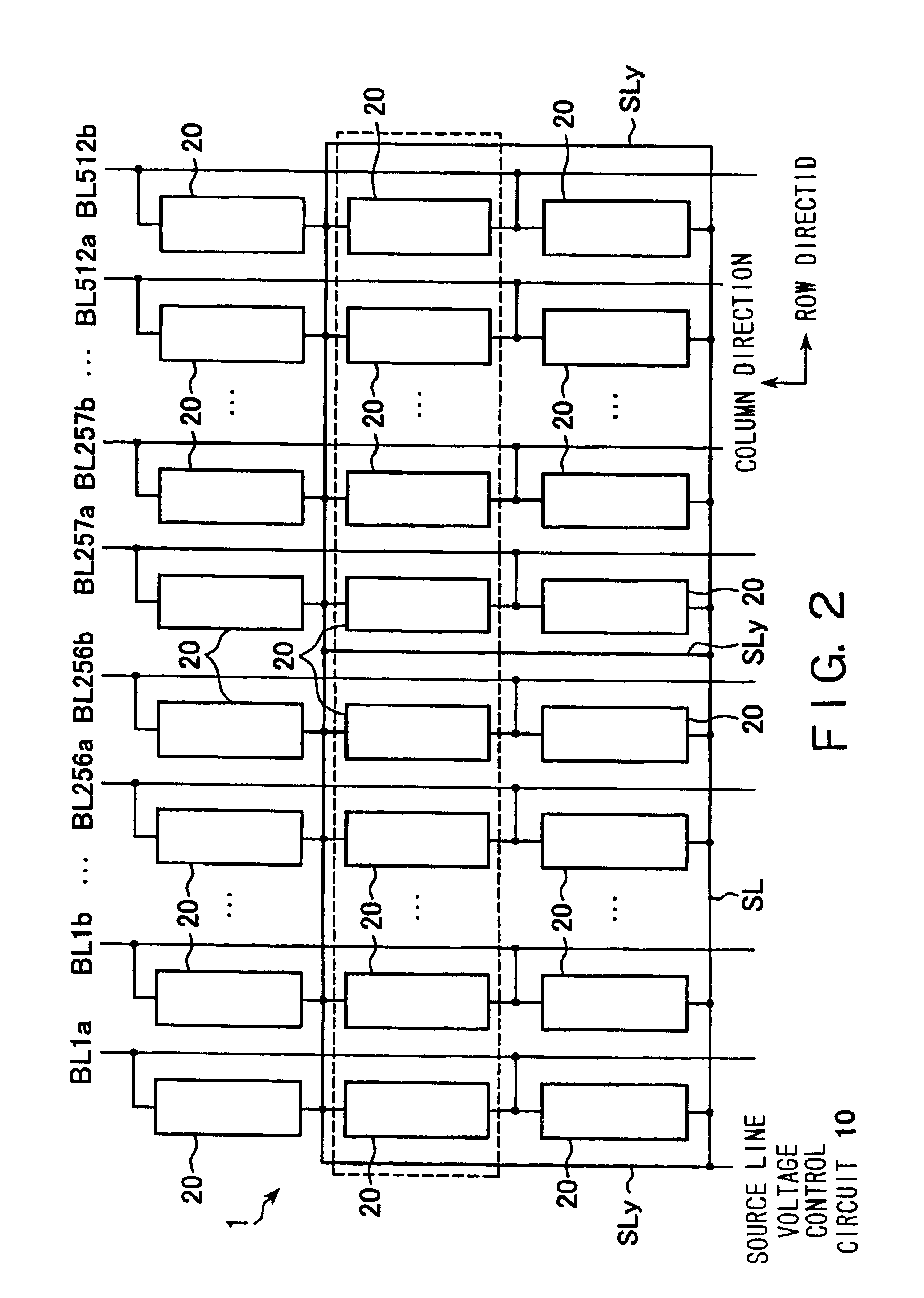Semiconductor memory
a technology of semiconductor devices and memory cells, applied in semiconductor devices, digital storage, instruments, etc., can solve the problems of increasing wiring resistance, difficult to shorten the maximum read time and reduce the maximum electromagnetic noise generated, and the threshold voltage of each memory cell is disadvantageously changed
- Summary
- Abstract
- Description
- Claims
- Application Information
AI Technical Summary
Benefits of technology
Problems solved by technology
Method used
Image
Examples
first embodiment
[First Embodiment]
[0088]FIG. 1 shows the configuration of a NAND type EEPROM in the first embodiment. FIG. 2 shows the configuration of a memory cell array of the NAND type EEPROM shown in FIG. 1. The memory cell array 1 is constituted so that a plurality of memory cell units (that is, NAND cell units) 20 each of which includes a plurality of memory cells connected in series, are arranged in row and column directions, respectively. Each NAND cell unit 20 is connected between a data transfer line (to be referred to as “bit line” hereinafter) BL continuous in the column direction and a reference potential line (to be referred to as “common source line” hereinafter) continuous in the row direction. A sense amplifier 4 is provided to sense data of the bit line of the memory cell array 1 or to hold written data. The sense amplifier 4 also serves as a data register and mainly consists of a flip-flop circuit.
[0089]The sense amplifier 4 is connected to a data input / output buffer 7. The conn...
second embodiment
[Modification of Second Embodiment]
[0205]FIGS. 21 and 22 show operation waveforms and voltage relationship if a read current is carried from the common source line to the bit line as the modification of the second embodiment, and correspond to FIGS. 15 and 16, respectively. In FIGS. 21 and 22 as in the case of FIGS. 15 and 16, a case of selecting the word line WL0 is shown and a case of reading data from the memory cell M15 instead of the memory cell M0 is shown in brackets. Data can be read from the other memory cells M1 to M14 by the same operation as that for the memory cell M0.
[0206]During data read, the row decoder 3 and the data control line driver 2 of the data read target block are activated, the read voltage Vr is applied to the selected word line WL0, the pass voltage Vread is applied to each of unselected word lines WL1 to WL15 and the pass voltage Vread is applied to the select gate line SSL (at time t1). The lines SSL, WL0 to WL15 and SSL in unselected blocks are kept i...
third embodiment
[Third Embodiment]
[0217]FIGS. 23 and 24 show the structure of a memory cell array in the third embodiment of the present invention. In this embodiment, not a floating gate type but a MONOS type memory cell structure is employed. The plan view of the cell array is the same as that shown in FIG. 4B. FIGS. 23 and 24 are cross-sectional views taken along lines A-A′ and B-B′ of FIG. 4B, respectively.
[0218]The cell array is formed in a p type well 23 which is formed in the n type well 22 of a p type silicon substrate 21. The boron density of the p type well 23 is set to fall within a range between, for example, 1014 cm−3 and 1019 cm3. The p type well 23 is isolated from the p type silicon substrate 21 by the n type well 22, so that a voltage can be applied to the p type well 23 independently of the p silicon substrate 21. This can reduce load on the booster circuit and to suppress consumption power during data erasure.
[0219]In this embodiment, the gate insulating film of each of the memor...
PUM
 Login to View More
Login to View More Abstract
Description
Claims
Application Information
 Login to View More
Login to View More - R&D
- Intellectual Property
- Life Sciences
- Materials
- Tech Scout
- Unparalleled Data Quality
- Higher Quality Content
- 60% Fewer Hallucinations
Browse by: Latest US Patents, China's latest patents, Technical Efficacy Thesaurus, Application Domain, Technology Topic, Popular Technical Reports.
© 2025 PatSnap. All rights reserved.Legal|Privacy policy|Modern Slavery Act Transparency Statement|Sitemap|About US| Contact US: help@patsnap.com



